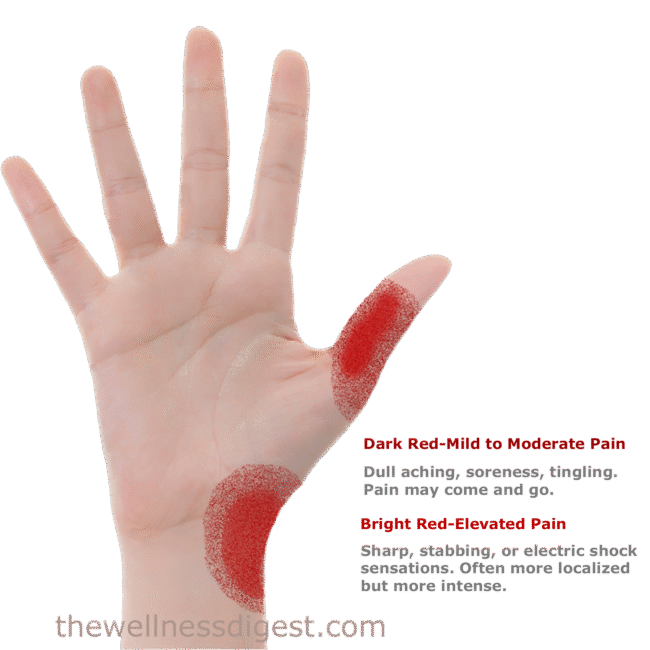
Does your thumb ache when gripping objects or scrolling on your phone?
Do you get cramps in your hand when opening jars, or find it painful to twist a doorknob? Have you started dropping things?
Don't assume this is due to arthritis or weak grip strength. It may be a dysfunction in one small muscle at the base of your thumb, the opponens pollicis.
Table of Contents
Where Is The Opponens Pollicis Muscle?
The opponens pollicis lies deep beneath other muscles at the base of your thumb. It connects a small wrist bone, the trapezium, to the first metacarpal, the long bone at the base of your thumb. You can feel it move when you bring your thumb across your palm to touch your little finger.
For detailed muscle anatomy information visit The Opponens Pollicis Anatomy Page
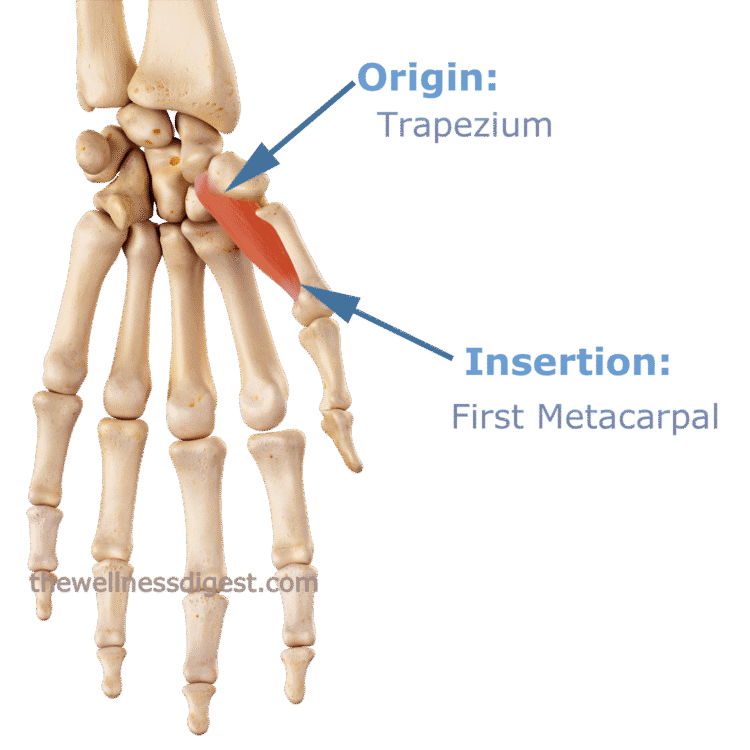
What Does The Opponens Pollicis Do?
The primary job of the opponens pollicis is thumb opposition, which is moving your thumb across your palm to touch your fingers.
It also assists with thumb flexion, bending the thumb toward the palm, and a small amount of rotation that helps align the thumb with your fingertips. Simple tasks like buttoning your shirt or picking up a coin become significantly more difficult without these muscle actions.
Every day tasks that rely on the muscle:
-
- Using your phone (texting and scrolling)
- Buttoning shirts or pants
- Gripping tools, eating utensils, pens/pencils
- Turning a doorknob and a key in a lock
- Picking up small objects like coins
- Opening jars or bottles


What Are The Symptoms Of Opponens Pollicis Pain?
When the Opponens Pollicis is overworked or injured, you will notice:
- A dull ache or tightness at the base of your thumb
- Weak grip or trouble using the pinching motion to hold objects
- You may feel a sharp pain when using pinching movements
- Hand fatigue when doing repetitive hand tasks
- Mild swelling in the thumb pad
- Wrist pain that feels like a mild sprain
These symptoms often start as minor annoyances and worsen with activities that require a precise grip, pressure, or frequent thumb movement.
What Causes Opponens Pollicis Muscle Pain?
The opponens pollicis muscle is active in nearly everything you do with your hands. It helps rotate and position the thumb so you can grip, pinch, and stabilize objects. Here are everyday tasks that often irritate the muscle:
-
- Repetitive thumb motions (texting, gaming, typing)
- Repetitive pinching tasks (writing, knitting, carpentry)
- Holding heavy objects with a tight grip ( grocery bags, moving furniture)
- Forceful gripping (opening jars, racket handles, weightlifting)
- Poor hand ergonomics (improper writing technique, mouse and keyboard use)
Daily actions that you do not think about but do repeatedly, not only overwork and stress the muscle, but can also lead to the development of trigger points.
What Are Opponens Pollicis Trigger Points?
Trigger points are tight, sensitive spots in the muscle that can cause localized pain and radiate discomfort to other areas, which is known as referred pain.
In the opponens pollicis, trigger points are found in the fleshy area at the base of the thumb. They often feel like small, tender lumps. Pressing on them may recreate the aching or sharp pain you are experiencing. Trigger points can even mimic the symptoms of carpal tunnel syndrome or thumb arthritis.
Referred Pain Pattern:
- Radiates from the thumb base toward the center of the palm or wrist
- Aching that feels like nerve pain or arthritis in the thumb
- Sensations may worsen during repetitive thumb movement
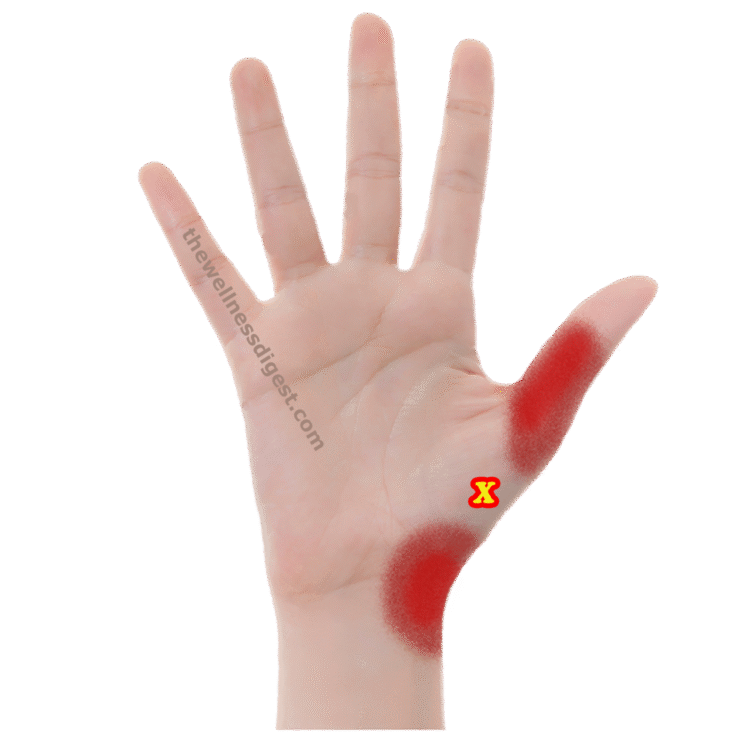
Self-Treatment For Opponens Pollicis Trigger Points
To treat opponens pollicis trigger points at home:
1. Press gently into the thumb pad to find tender, tight spots.
2. Once a point is found, apply sustained pressure for 10 seconds.
3. Release and rest. Repeat this 3 times per session, up to 3 times per day.
4. The pressure level should be "hurts so good". It should not be sharp or unbearable.
This approach is specific to trigger points and differs from general treatments for strains, injuries, and inflammation.
The Book I Recommend Most for Trigger Point Pain
Learn how to find the root cause of pain and treat it at home.
Do you suffer from:
- An aching wrist?
- A painful thumb?
- Weak grip?
- Hand fatigue after simple tasks?
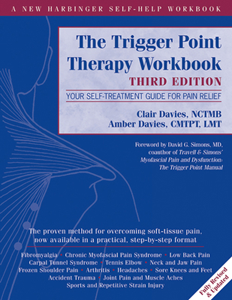
As an Amazon Associate, I earn from qualifying purchases.
It May Not Be Joint Pain
What if your pain is not caused by bones or joints? It might be your muscles. This book helps you uncover the real source. Learn how to locate and treat painful trigger points.
What Helps Relieve Opponens Pollicis Muscle Pain
Most cases of opponens pollicis pain can be treated at home with rest. The use of supports for the wrist that keep your hand in a natural position, such as wrist rests or tools with padded grips also helps bring relief. Gentle massage techniques can work wonders.
How to manage pain and tightness:
-
- Rest - Give your thumb breaks from repetitive tasks like texting, typing, or gripping.
- Cold therapy - Apply a cold pack after periods of high use to reduce pain.
- Ergonomic tweaks - Choose styluses and tools with larger hand grips.
- Braces: A thumb stabilizer can protect the joint and reduce stress during periods of high use.
- Massage - Use your opposite hand to massage the thumb pad.
- Topical creams - For pain and inflammation, try:
When To Seek Medical Health
While most thumb pain linked to the opponens pollicis can be managed with self-care, there are times when you need professional help. Seek medical attention if:
-
- Never massage an area that has swelling, is red, or is warm to the touch. These are signs of infection and should be evaluated by a doctor.
- Pain persists or worsens after 4-5 days of self-treatment
- You experience numbness or tingling in the thumb and hand that doesn’t improve with rest or treatment.
- Grip strength noticeably declines or the thumb becomes difficult to move. You have problems doing fine motor movements with your hand.
The Thumb Stabilizer I Use and Recommend
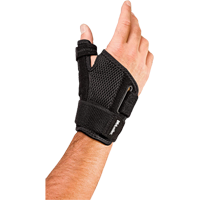 Massage therapists use their thumbs A LOT, and consequently tend to have sore thumbs and wrists. As a former MT, I can tell you, this brace works. It is adjustable, lightweight, and holds the thumb and wrist stable, reducing muscle strain and relieving pain.
Massage therapists use their thumbs A LOT, and consequently tend to have sore thumbs and wrists. As a former MT, I can tell you, this brace works. It is adjustable, lightweight, and holds the thumb and wrist stable, reducing muscle strain and relieving pain.
As an Amazon Associate, I earn from qualifying purchases.
How Can I Prevent Opponens Pollicis Pain?
Keeping the opponens pollicis healthy begins with making small changes in how you use your hands throughout the day. Here are a few tips to reduce strain and prevent future flare-ups:
- Take mini breaks during tasks that require repetitive thumb movements. Short breaks go a long way to keep pain at bay.
- Stretch regularly to keep the muscles flexible.
- Use supportive thumb gear during long work sessions, workouts, or repetitive tasks.
- Warm up your hands before workouts or long work sessions. Even a minute of gentle movements and stretching helps.
- Watch your wrist posture. Keep it neutral and flat at the wrist/forearm connection, not bent.
- Use thicker pens, styluses, and tools with larger handles to reduce pinch pressure and muscle fatigue.
Stretching and Strengthening Exercises
Stretches To Relieve Tightness
1. Thumb Cross Stretch: Use your other hand to gently pull the thumb across your palm. Hold for 20 seconds. Repeat 3x.
2. Palm Roll Stretch: Place a massage ball on a table and roll the thumb pad area for about a minute. You will be surprised at the relief this will bring.
Strengthening Exercises To Increase Mobility
1. Rubber Band Expansion
-
- Wrap a rubber band around your fingers and thumb.
- Slowly open your hand against the resistance, then release.
- Do 10 reps, 2 sets.
2. Hand Putty or Ball Pinch
-
-
- Squeeze the hand putty using your thumb and fingers in a pinching motion. If you are using a hand therapy ball, squeeze with medium pressure between the thumb and fingers. Some pain is normal, but if it is extremely painful, let up on the pressure or stop.
- Hold for 5 seconds. Repeat up to 5 times.
-
This video demonstrates the hand exercises I did daily during my massage therapist career. These simple exercises kept my thumbs flexible and pain-free.
If you are having pain in the thumb pad and base of the thumb, try doing these exercises once a day until the pain subsides. If you find the exercises painful or your pain increases, stop and consult with a therapist or physician.
Frequently Asked Questions
Q: Is the pain in the thumb always caused by the opponens pollicis?
A: No. Several muscles and nerves can produce pain in the thumb. Pain could come from the adductor pollicis, the flexor pollicis longus, or a nerve compression similar to carpal tunnel.
Q: Can opponens pollicis pain be mistaken for carpal tunnel syndrome?
A: Yes. Tightness or trigger points in the muscle can cause symptoms similar to carpal tunnel, such as pain, weakness, or numbness. When carpal tunnel syndrome is suspected, it is important to check for muscle-based causes and not assume the symptoms are nerve-based
Q: Can I still use my hand if this muscle is irritated?
A: Yes, but with limits. Overuse can make the pain worse. Gentle stretches, massage that targets the muscle, and a thumb/wrist brace can help you continue to use your hand while it heals.
A list of muscles including the opponens pollicis that may be connected with these conditions:
Muscles With Similar Pain Patterns
Areas of Pain
Abdominal Pain | Ankle Pain | Arm (Lower) Pain | Arm (Upper) Pain | Back (Low) Pain | Back (Upper) Pain | Chest Pain | Elbow Pain | Foot Pain | Groin Pain | Hand Pain | Head Pain | Hip Pain | Knee Pain | Leg (Low) Pain | Leg (Upper) Pain | Neck Pain | Pelvic Pain | Shoulder Pain | Wrist Pain
Products I Use And Recommend For Opponens Pollicis Pain

Keep Moving!
Trusted Sources for Muscle Anatomy and Pain Patterns
These are the top 6 sources I use to verify muscle function, pain referral patterns, treatment techniques, and anatomical structure. My experience as a massage therapist informs the interpretation and practical application of this information.
- Travell, J. G., & Simons, D. G. (1983). Myofascial Pain and Dysfunction: The Trigger Point Manual, Volume 1 – The Upper Extremities. Williams & Wilkins.
- Travell, J. G., & Simons, D. G. (1992). Myofascial Pain and Dysfunction: The Trigger Point Manual, Volume 2 – The Lower Extremities. Williams & Wilkins.
- Davies, C., & Davies, A. (2013). The Trigger Point Therapy Workbook: Your Self-Treatment Guide for Pain Relief (3rd ed.). New Harbinger Publications.
- Muscolino, J. E. (2016). Kinesiology: The Skeletal System and Muscle Function (3rd ed.). Mosby.
- Clay, J. H., Allen, L., & Pounds, D. (2015). Basic Clinical Massage Therapy: Integrating Anatomy and Treatment (3rd ed.). Lippincott Williams & Wilkins.
- Dalton, E. (n.d.). Myoskeletal Alignment Techniques. Retrieved from https://erikdalton.com


